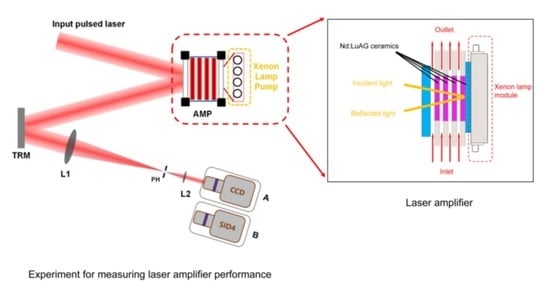Modeling and Measurement of Thermal Effect in a Flashlamp-Pumped Direct-Liquid-Cooled Split-Disk Nd:LuAG Ceramic Laser Amplifier
Abstract
1. Introduction
2. Direct-Liquid-Cooled Split-Disk Laser Amplifier
2.1. Nd:LuAG Ceramics
2.2. Structure of Laser Amplifier
2.3. Preliminary Thermal Evaluation of Laser Amplifier
3. Modeling of Direct-Liquid-Cooled Split-Disk Laser Amplifier
3.1. Modeling of Thermal Effect in the Laser Amplifier
- Xenon lamp radiation model, to calculate the pump distribution in Nd:LuAG.
- Thermal-fluid–solid multiphysics model, to calculate the temperature and stress of Nd: LuAG.
- Thermally induced wavefront model, to calculate the single-pass thermally induced wavefront aberration of Nd:LuAG.
3.2. Xenon Lamp Radiation Model
3.3. Thermal-Fluid–Solid Multiphysics Model
3.4. Thermally Induced Wavefront Model
4. Experimental Setup and Results
4.1. Experimental Setup
4.2. Experimental Pump Distribution
4.3. Experimental Wavefront Aberration
5. The Modeling of 10 Hz Direct-Liquid-Cooled Split-Disk Laser Amplifier
6. Conclusions
Author Contributions
Funding
Data Availability Statement
Conflicts of Interest
References
- Dunne, M. A high-power laser fusion facility for Europe. Nat. Phys. 2006, 2, 2–5. [Google Scholar] [CrossRef]
- Kalainathan, S.; Prabhakaran, S. Recent development and future perspectives of low energy laser shock peening. Opt. Laser Technol. 2016, 81, 137–144. [Google Scholar] [CrossRef]
- Azhari, A.; Sulaiman, S.; Prasada Rao, A.K. A review on the application of peening processes for surface treatment. IOP Conf. Ser. Mater. Sci. Eng. 2016, 114, 012002. [Google Scholar] [CrossRef]
- Lindl, J. Development of the indirect-drive approach to inertial confinement fusion and the target physics basis for ignition and gain. Phys. Plasmas 1995, 2, 3933–4024. [Google Scholar] [CrossRef]
- Kodama, R.; Norreys, P.A.; Mima, K.; Dangor, A.E.; Evans, R.G.; Fujita, H.; Kitagawa, Y.; Krushelnick, K.; Miyakoshi, T.; Miyanaga, N.; et al. Fast heating of ultrahigh-density plasma as a step towards laser fusion ignition. Nature 2001, 412, 798–802. [Google Scholar] [CrossRef] [PubMed]
- Bayramian, A.; Armstrong, P.; Ault, E.; Beach, R.; Bibeau, C.; Caird, J.; Campbell, R.; Chai, B.; Dawson, J.; Ebbers, C.; et al. The Mercury project: A high average power, gas-cooled laser for inertial fusion energy development. Fusion Sci. Technol. 2007, 52, 383–387. [Google Scholar] [CrossRef]
- Gales, S.; Tanaka, K.A.; Balabanski, D.L.; Negoita, F.; Stutman, D.; Tesileanu, O.; Ur, C.A.; Ursescu, D.; Andrei, I.; Ataman, S.; et al. The extreme light infrastructure—Nuclear physics (ELI-NP) facility: New horizons in physics with 10 PW ultra-intense lasers and 20 MeV brilliant gamma beams. Rep. Prog. Phys. 2018, 81, 094301. [Google Scholar] [CrossRef] [PubMed]
- Mason, P.; Divoký, M.; Ertel, K.; Pilar, J.; Butcher, T.; Hanuš, M.; Banerjee, S.; Phillips, J.; Smith, J.; Vido, M.; et al. Kilowatt average power 100 j-level diode pumped solid state laser. Optica 2017, 4, 438–439. [Google Scholar] [CrossRef]
- Erlandson, A.; Aceves, S.; Bayramian, A.; Bullington, A.; Beach, R.; Boley, C.; Caird, J.; Deri, R.; Dunne, A.; Lowers, D.; et al. Comparison of Nd:phosphate glass, Yb:YAG and Yb:S-FAP laser beamlines for laser inertial fusion energy (LIFE). Opt. Mater. Express 2011, 1, 1341–1352. [Google Scholar] [CrossRef]
- Liu, T.; Feng, T.; Sui, Z.; Liu, Q.; Gong, M.; Zhang, L.; Jiang, B.; Fu, X. 50 mmaperture Nd:LuAG ceramic nanosecond laser amplifier producing 10 J at 10 Hz. Opt. Express 2019, 27, 15595–15603. [Google Scholar] [CrossRef] [PubMed]
- Liu, Q.; Wang, J.; Liu, J.; Li, L.; Chen, R.; Shi, X. Thermal analysis of active mirror Nd: LuAG gain medium. Chin. J. Lasers 2018, 45, 0801002. [Google Scholar]
- Wang, J.; Zhao, K.; Feng, T.; Zhu, X.; Chen, W. 1.5 J high-beam-quality Nd:LuAG ceramic active mirror laser amplifier. Chin. Opt. Lett. 2020, 18, 021401. [Google Scholar] [CrossRef]
- Xu, D.; Wang, X.; Meng, J. Crystal growth, spectral and laser properties of Nd: LuAG single crystal. Laser Phys. Lett. 2009, 6, 678–681. [Google Scholar] [CrossRef]
- Liu, Q.; Gong, M.; Liu, T.; Sui, Z.; Fu, X. Efficient sub-joule energy extraction from a diode-pumped Nd:LuAG amplifier seeded by a Nd:YAG laser. Opt. Lett. 2016, 41, 5322–5325. [Google Scholar] [CrossRef] [PubMed]
- Arzakantsyan, M.; Ananyan, N.; Gevorgyan, V.; Chanteloup, J.C. Growth of large 90 mm diameter Yb:YAG single crystals with Bagdasarov method. Opt. Mater. Express 2012, 2, 1219–1225. [Google Scholar] [CrossRef]
- Mangir, M.S.; Rockwell, D.A. Measurements of heating and energy storage in flashlamp-pumped Nd:YAG and Nd-doped phosphate laser glasses. IEEE J. Quantum Electron. 1986, 22, 574–580. [Google Scholar] [CrossRef]
- Ji, S.; Huang, W.; Pan, L.; Wang, J.; Lu, X.; Fan, W.; Li, X. Hydrodynamic and thermal simulation for high energy large size Nd:YAG liquid-cooled laser amplifier. Proc. SPIE 2020, 11717. [Google Scholar] [CrossRef]
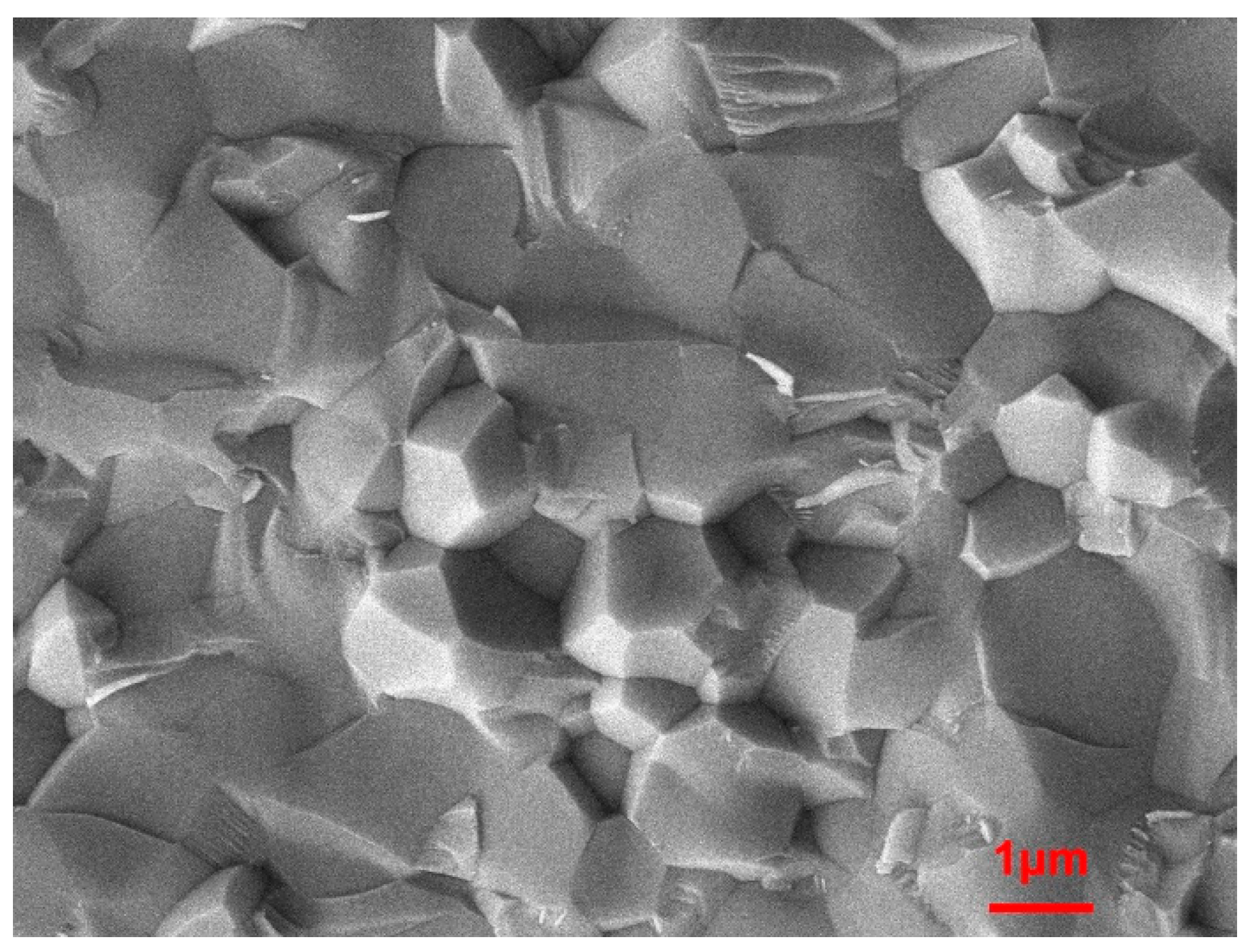

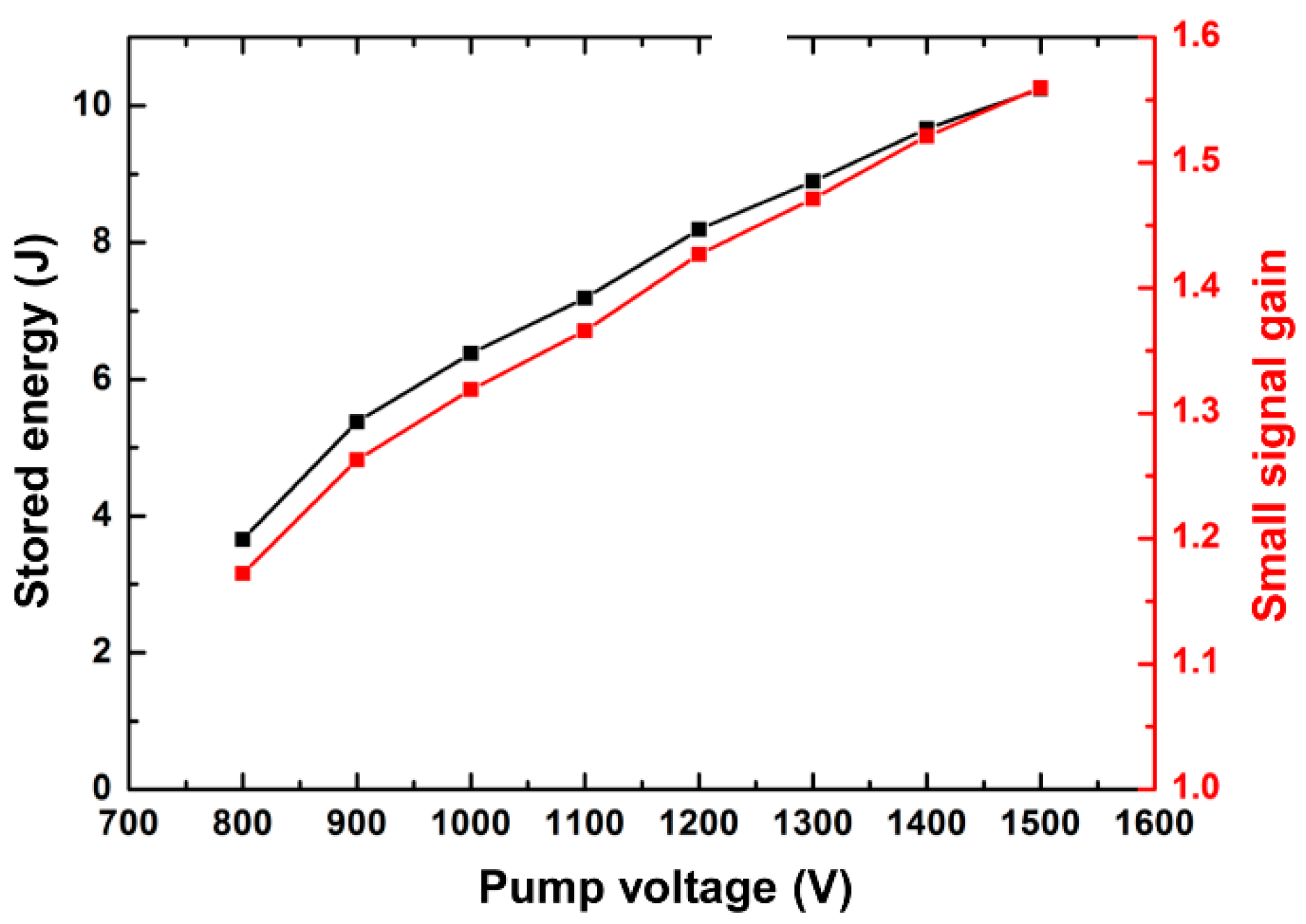
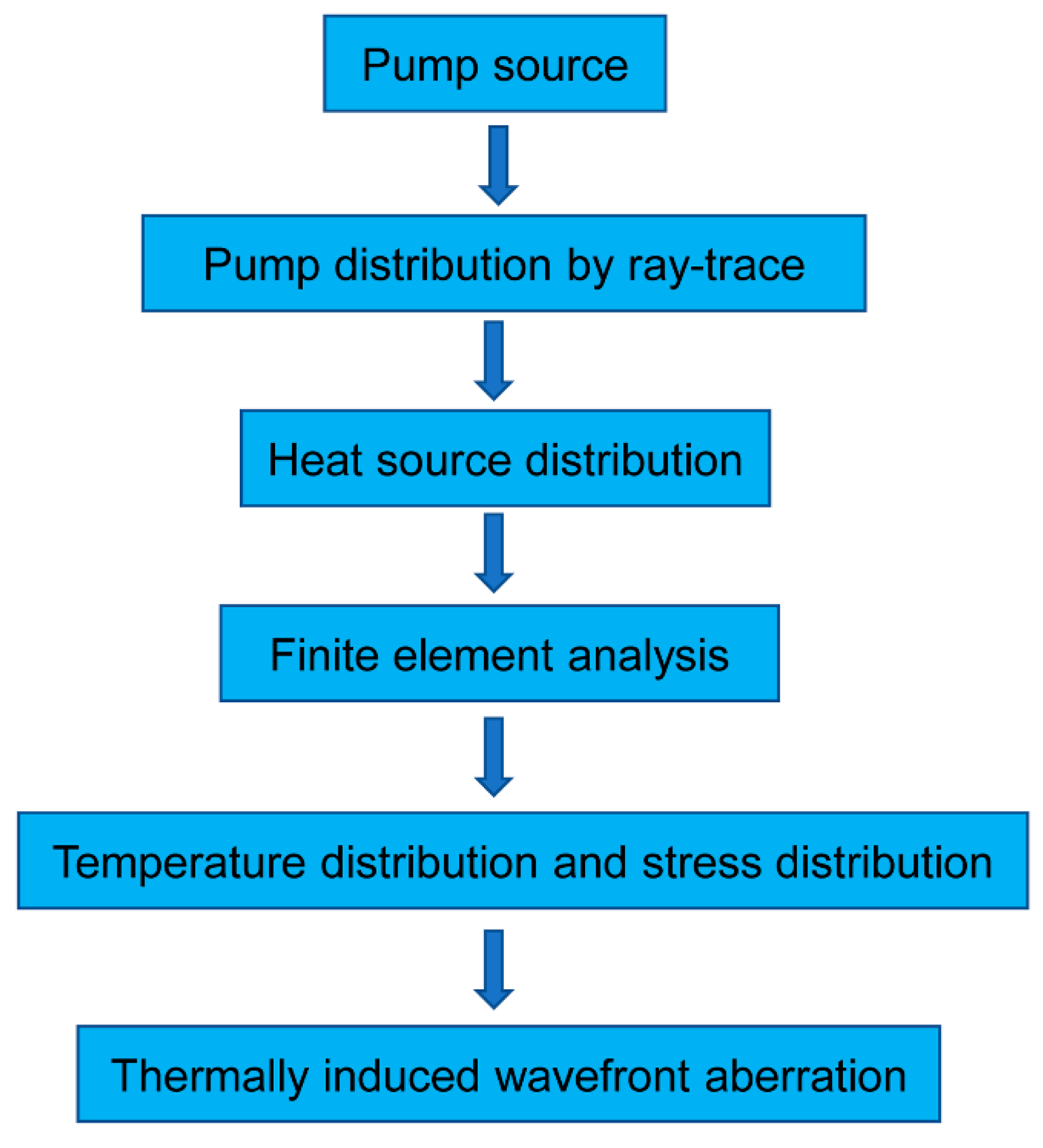

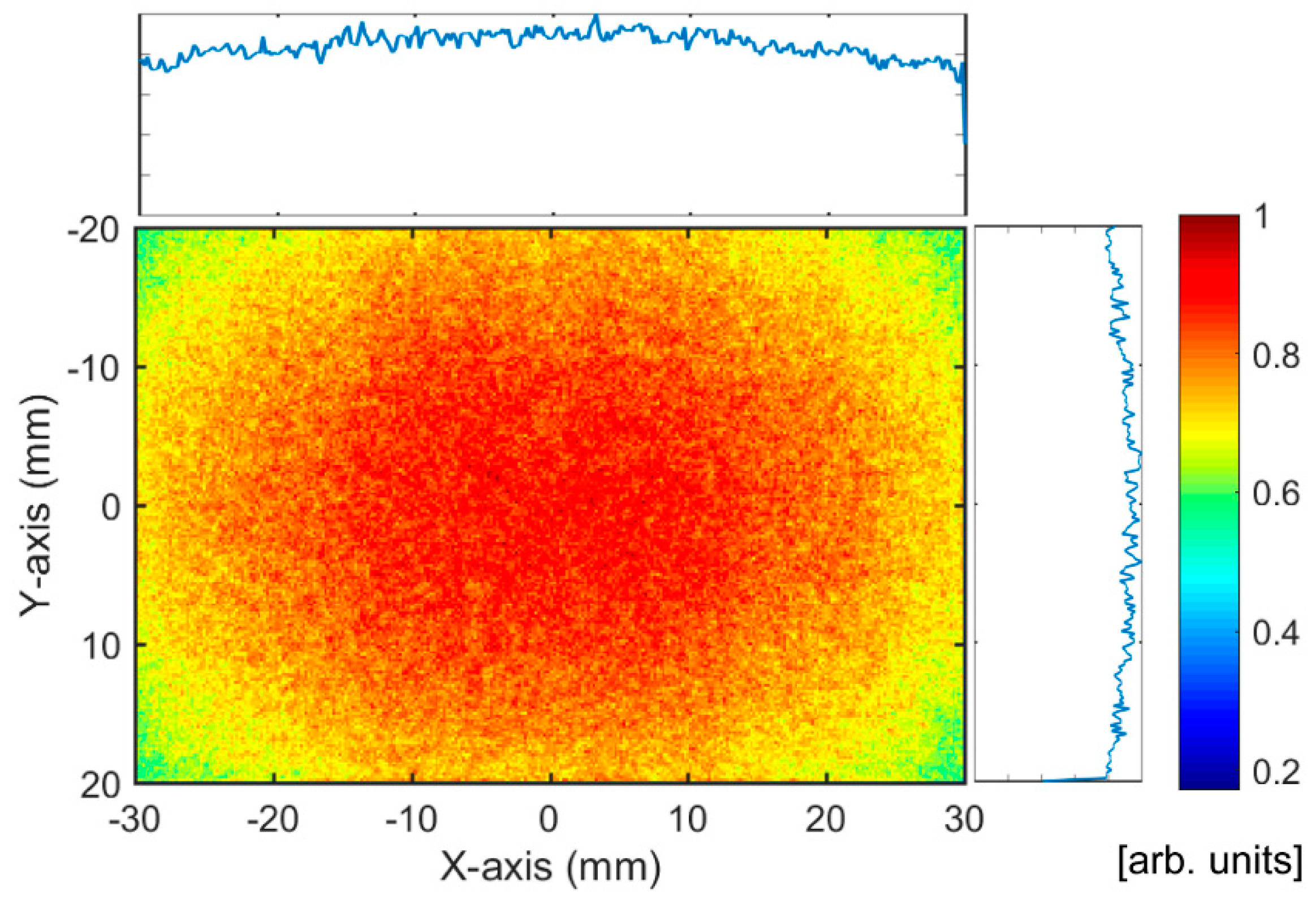


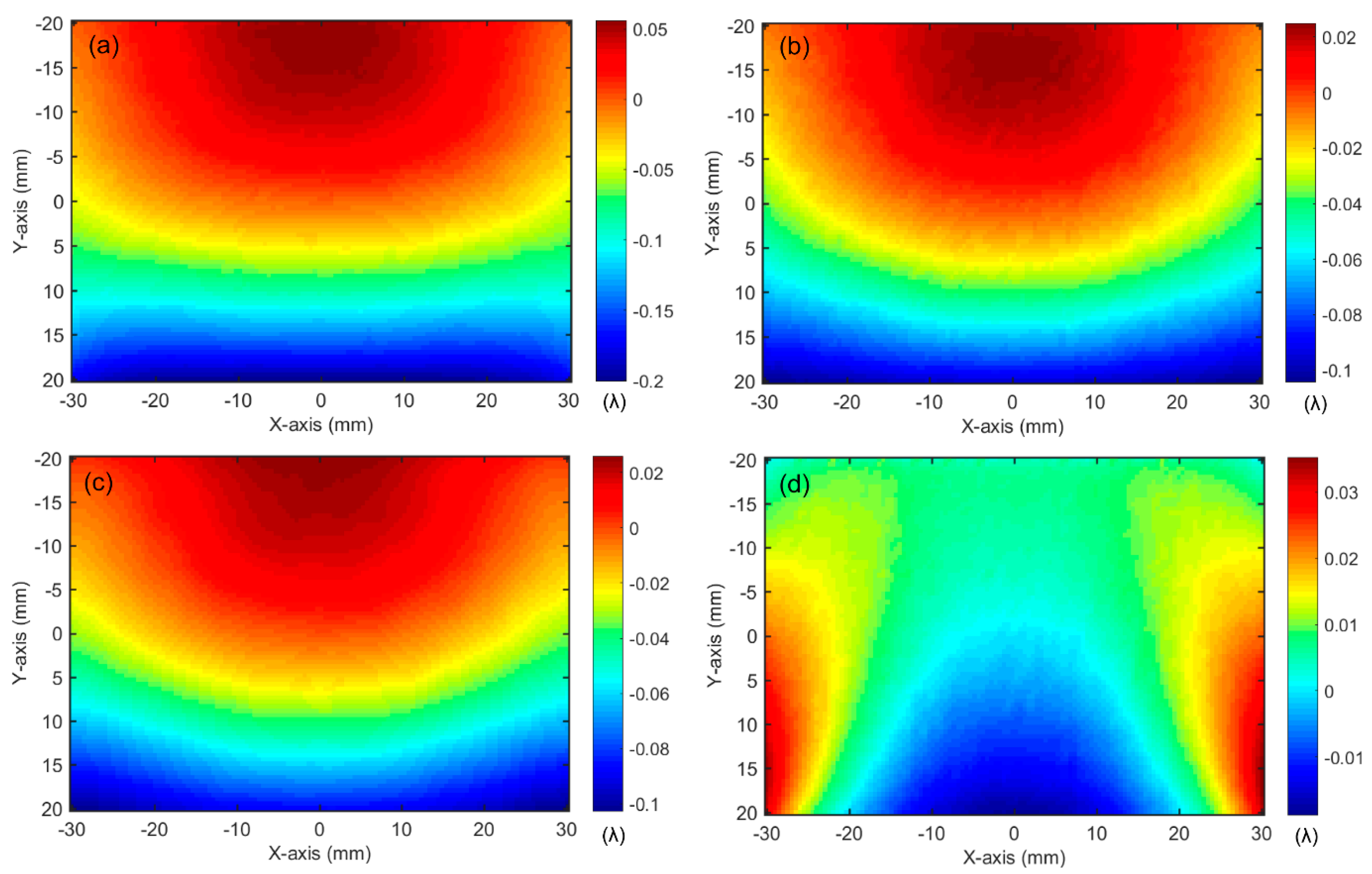
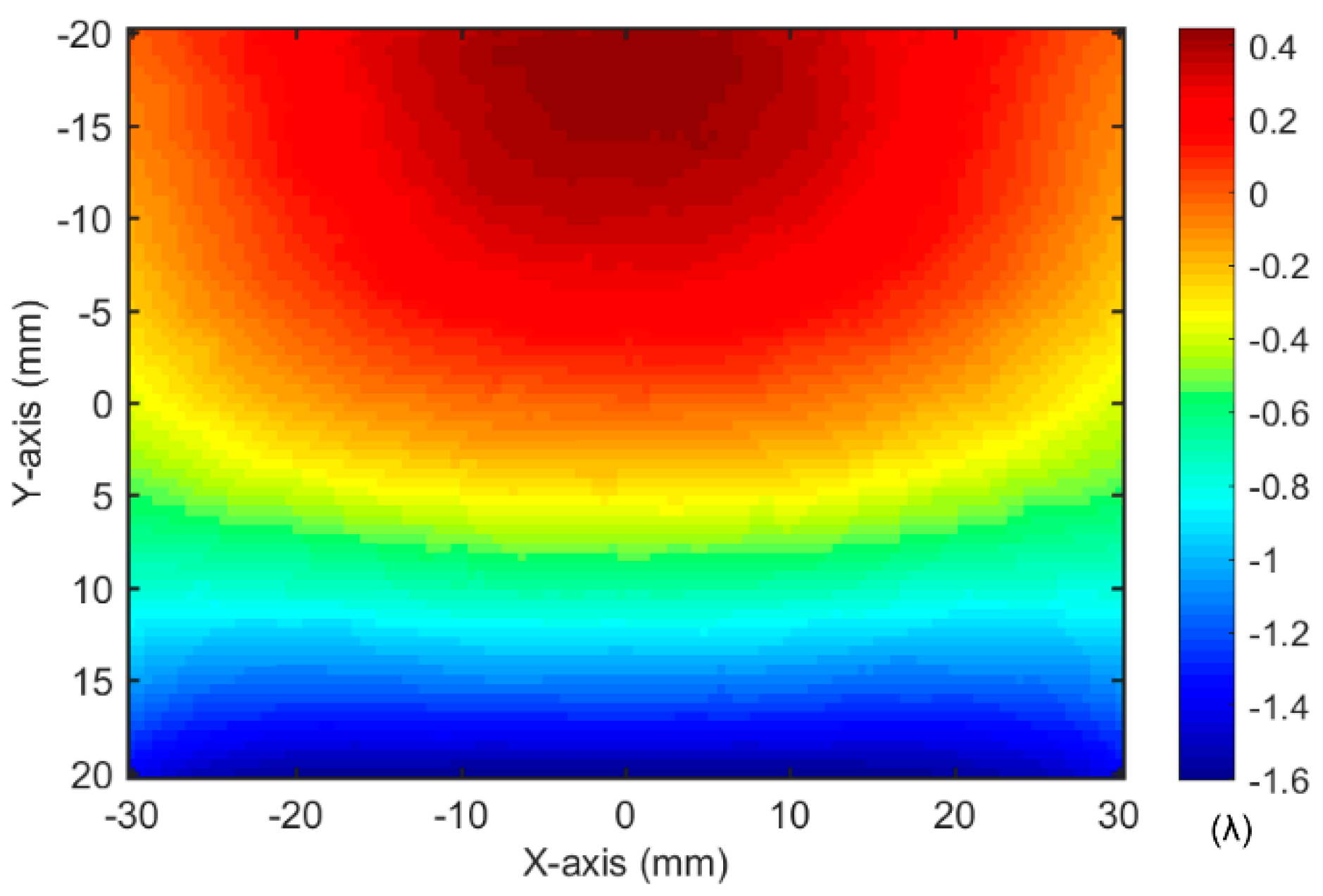
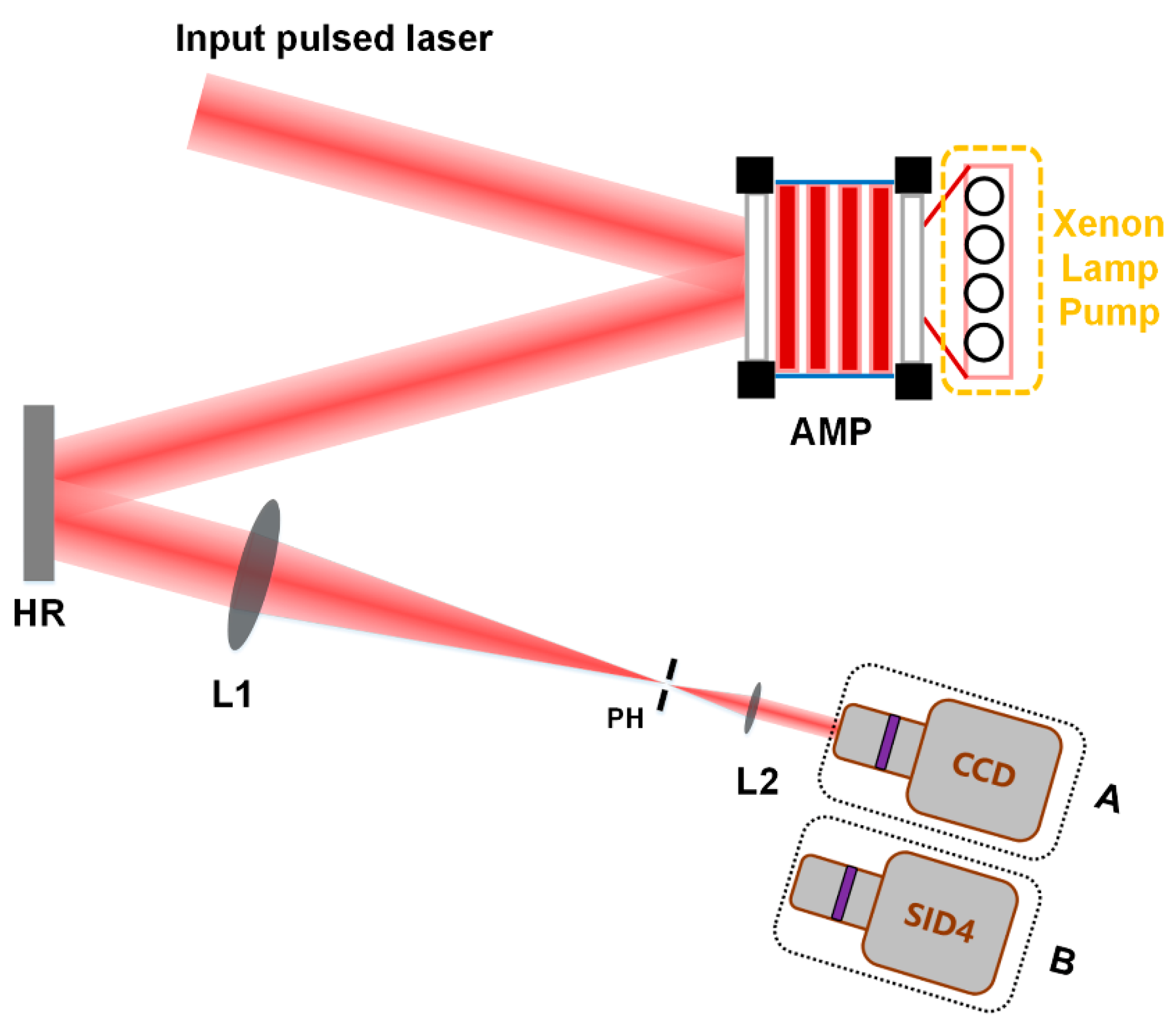


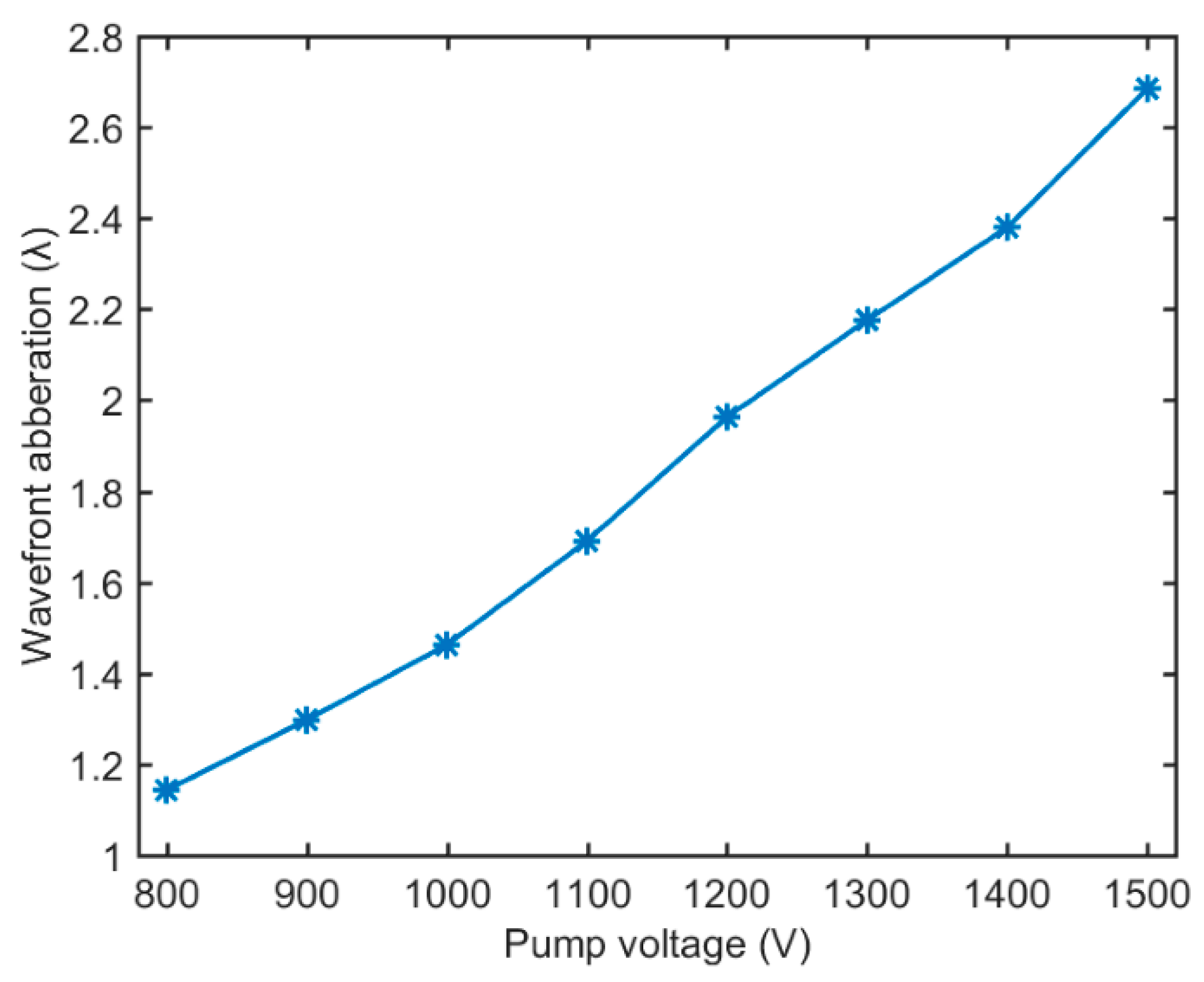

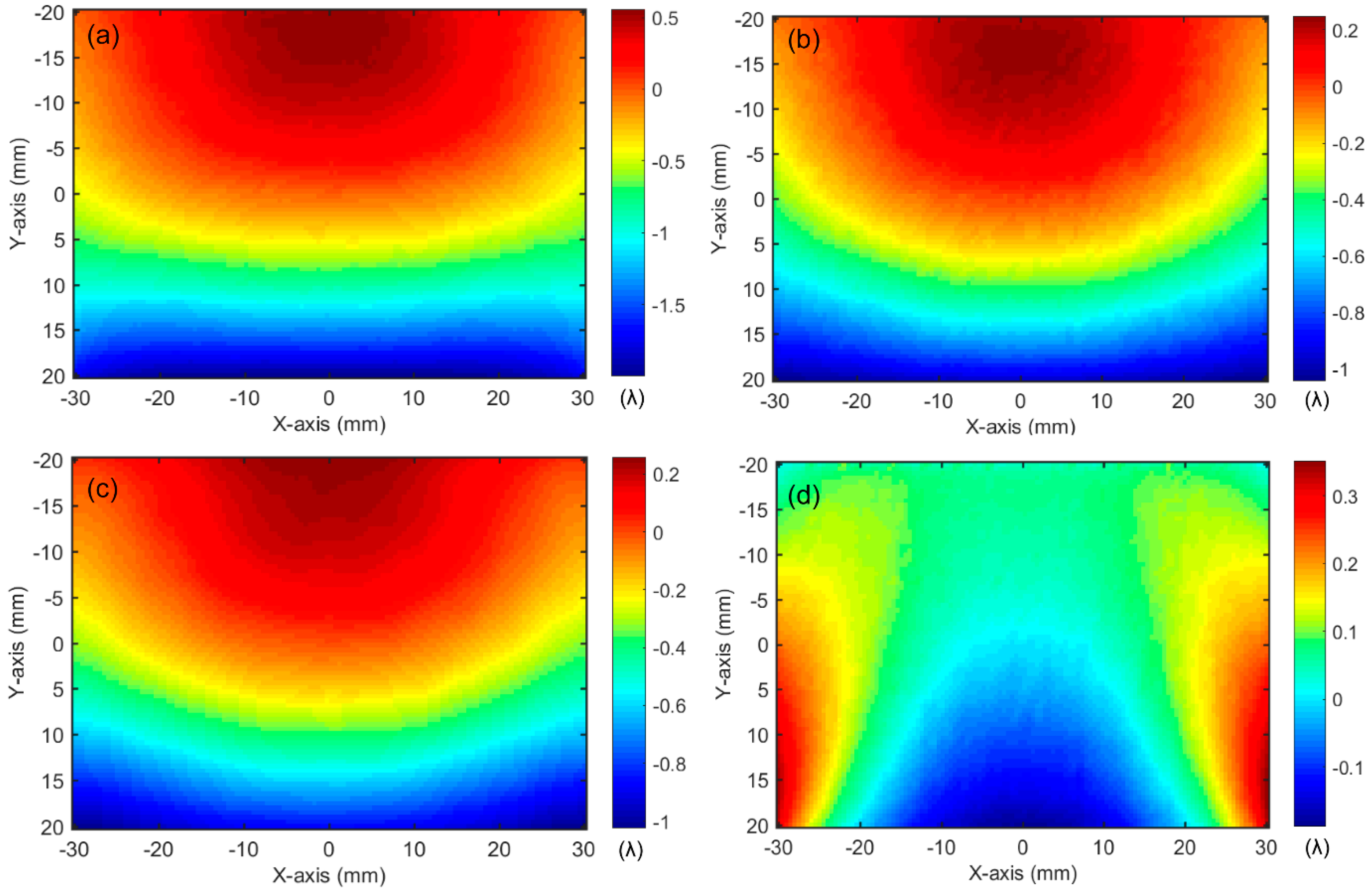
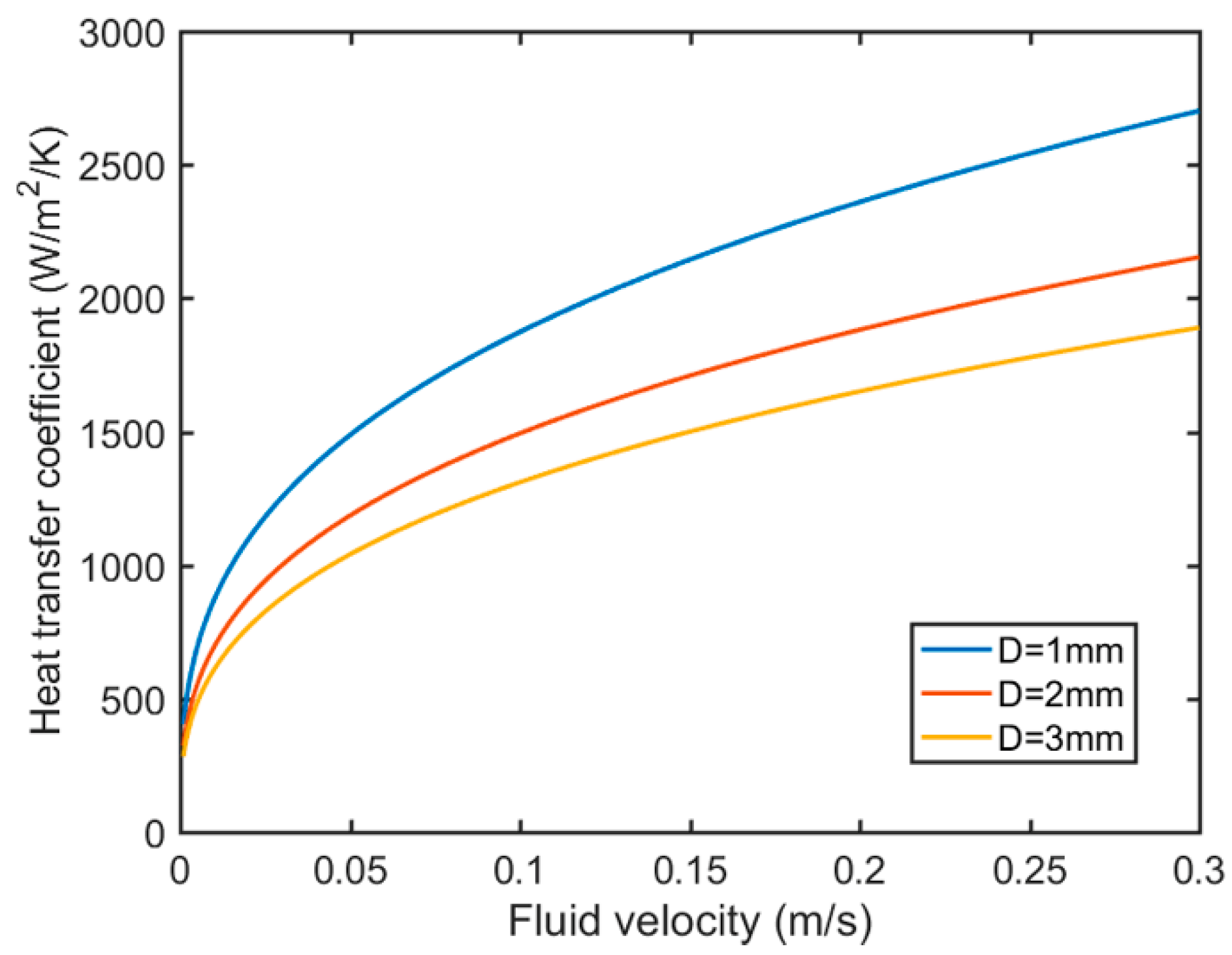
Publisher’s Note: MDPI stays neutral with regard to jurisdictional claims in published maps and institutional affiliations. |
© 2021 by the authors. Licensee MDPI, Basel, Switzerland. This article is an open access article distributed under the terms and conditions of the Creative Commons Attribution (CC BY) license (https://creativecommons.org/licenses/by/4.0/).
Share and Cite
Ji, S.; Huang, W.; Feng, T.; Pan, L.; Wang, J.; Lu, X.; Jiang, B.; Fan, W.; Li, X. Modeling and Measurement of Thermal Effect in a Flashlamp-Pumped Direct-Liquid-Cooled Split-Disk Nd:LuAG Ceramic Laser Amplifier. Photonics 2021, 8, 97. https://doi.org/10.3390/photonics8040097
Ji S, Huang W, Feng T, Pan L, Wang J, Lu X, Jiang B, Fan W, Li X. Modeling and Measurement of Thermal Effect in a Flashlamp-Pumped Direct-Liquid-Cooled Split-Disk Nd:LuAG Ceramic Laser Amplifier. Photonics. 2021; 8(4):97. https://doi.org/10.3390/photonics8040097
Chicago/Turabian StyleJi, Shengzhe, Wenfa Huang, Tao Feng, Long Pan, Jiangfeng Wang, Xinghua Lu, Benxue Jiang, Wei Fan, and Xuechun Li. 2021. "Modeling and Measurement of Thermal Effect in a Flashlamp-Pumped Direct-Liquid-Cooled Split-Disk Nd:LuAG Ceramic Laser Amplifier" Photonics 8, no. 4: 97. https://doi.org/10.3390/photonics8040097
APA StyleJi, S., Huang, W., Feng, T., Pan, L., Wang, J., Lu, X., Jiang, B., Fan, W., & Li, X. (2021). Modeling and Measurement of Thermal Effect in a Flashlamp-Pumped Direct-Liquid-Cooled Split-Disk Nd:LuAG Ceramic Laser Amplifier. Photonics, 8(4), 97. https://doi.org/10.3390/photonics8040097





